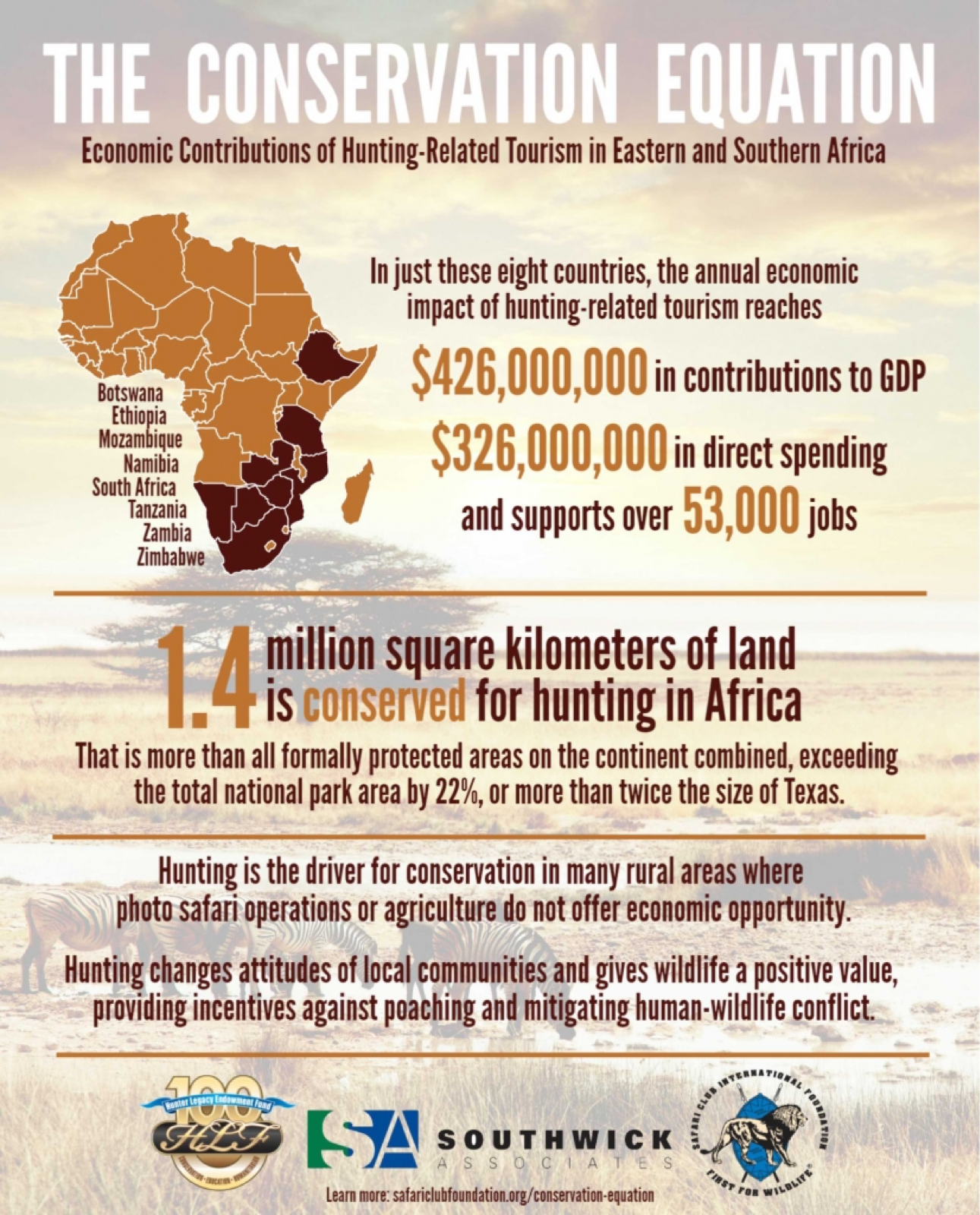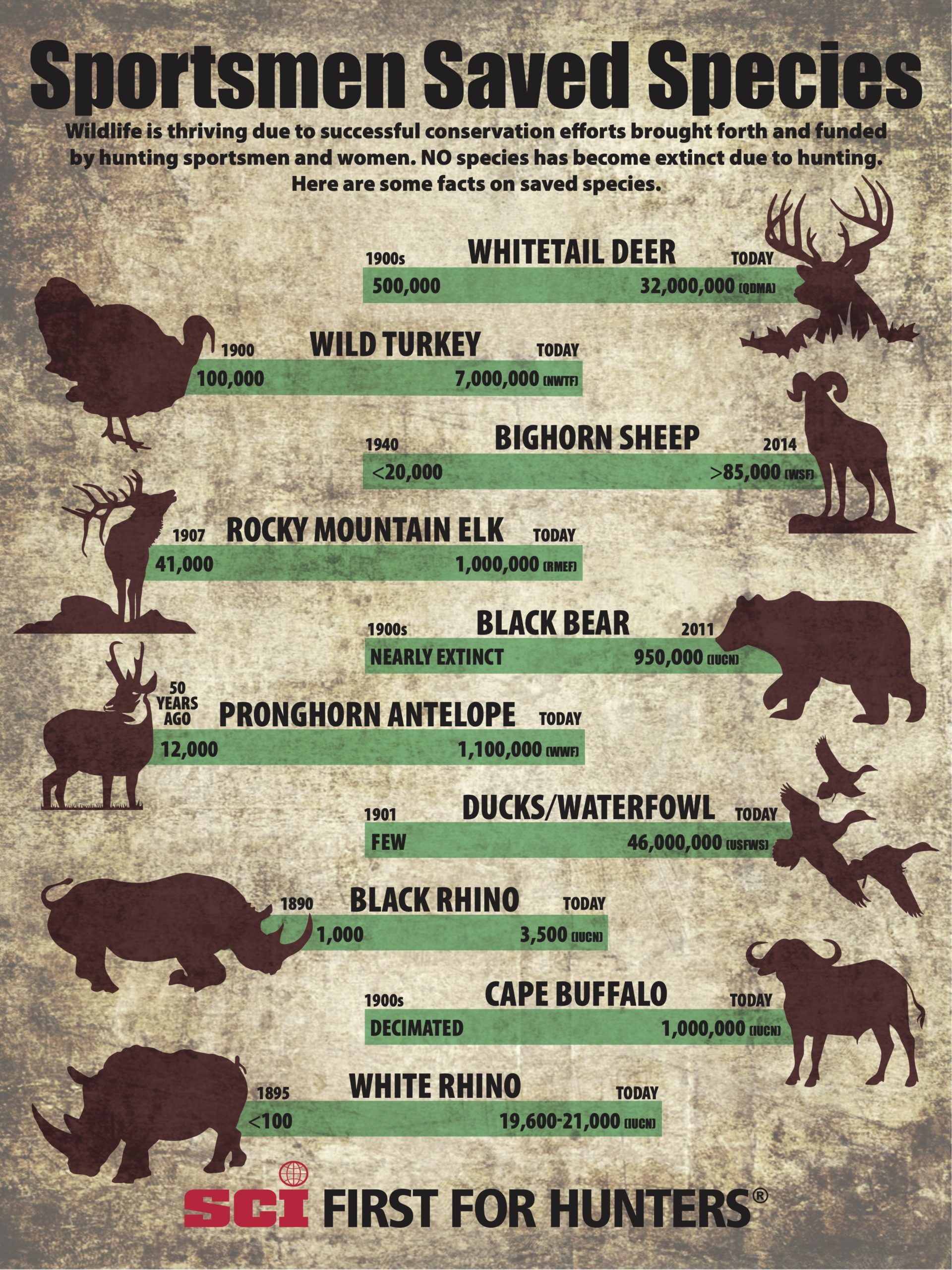
Economic Contributions of Hunting-Related Tourism in Eastern and Southern Africa
SCI Foundation has commissioned a report, produced by Southwick Associates, on the economic contribution of hunting in Sub-Saharan Africa. This report investigates the extent of hunters’ annual spending and the resulting economic contributions within an eight-country study area from 2012 to 2014. Results show that hunting contributes $426 million to the GDP of these African economies every year, hunters directly spend $326 million annually, and the industry supports over 53,400 jobs.
Having hunting on the landscape as a viable land use means conservation. Many areas where hunting provides critical income are rural or not viable enough for photo safari operations. Agriculture may also not offer reasonable economic opportunities in areas where hunting now occurs. These considerations show that hunting provides important economic opportunities for many areas where other common forms of income are limited.
Species Saved by Sportsmen
Wildlife is thriving due to successful conservation efforts brought forth and funded by hunting sportsmen and women. No species has become extinct due to hunting. Here are some facts on saved species.
The North American Model of Wildlife Conservation
The North American Model of Wildlife Conservation is a set of principles that, when collectively applied, have led to the formation and successes of wildlife conservation and management in the United States.
Key to the Model are two major principles. First, fish & wildlife populations belong to all Americans. Second, they be managed for generations to come using best available science.
There are seven tenants to the North American Model:
- Wildlife is a Public Resource - In the Unites States, wildlife is considered a public resource managed by government agencies for future generations.
- Prohibition on Commerce of Dead Wildlife - Commercial hunting and the sale of wildlife is prohibited to ensure the sustainability of wildlife populations for generations to come.
- Rule of Law - Since wildlife is a public resource managed by government for the people, access to wildlife for hunting is only allowed through ethical, legal mechanisms such as set hunting seasons, bag limits, license requirements, etc.
- Non-Frivolous Use - Wildlife is a shared resource that must not be wasted. Individuals may only legally kill certain species for food and fur, self-defense and property protection.
- International Resource - Some species cross local, state and national borders. The United States must work together with other countries to manage species across international boundaries.
- Scientific Management - In order to manage wildlife as a shared resource fairly, objectively, and knowledgeably, decisions must be based solely on sound science.
- Hunting Opportunities for All - The government allocates access to wildlife regardless of wealth, prestige, land ownership or social class.
10 Facts That Prove Hunting Drives Conservation
- Passed in 1937 with the support of hunters, the Pittman-Robertson Act, created an 11% tax on firearms, ammunition and other sporting equipment fund conservation. To date, more than $15 billion has been raised.
- Funding for game wardens in the U.S. comes from state wildlife agencies that also receive the bulk of their funding from hunting-related revenue.
- Hunters are the driving force behind conservation in North America, facilitating the recovery of dozens of game animals and helping to protect wildlife habitat across the continent. The North American Model of Conservation is entirely based on the foundation of sustainable-use hunter-conservationists.
- 1.4 million square kilometers of land is conserved for hunting in Africa. That is more than all formally protected areas on the continent combined, exceeding the total national park area by 22%, or an area over twice the size of Texas.
- Hunting has contributed to the recovery of biodiversity around the world, including the Southern White Rhino, which has grown from 30 individuals in the 1900s to over 21,000 today. Other species include the Black Rhino, Hartman's Mountain Zebra, Markhor, and Argali Sheep.
- The hunting industry supports over 86,000 jobs in just five African Sub-Saharan countries.
- Hunting incentivizes tolerance for dangerous and problematic wildlife species, such as lions, elephants, or bears, and reduces retaliatory killing of conflict animals by local communities.
- Hunting provides 45% of direct cash returns to communal conservancies in Namibia, making its community-based approach the economic driver for conservation and an excellent example of how sustainable use practices benefit wildlife.
- Hunting operators in Africa support anti-poaching efforts on the ground by employing local people, mitigating human-wildlife conflict, and providing game meat to communities.
- The CAMPFIRE program in Zimbabwe benefits 777,000 households, or 255 of all households in the country, and provides $620,000 annually to community development projects and $310,000 to drought relief and is funded 90% by income from hunting.






